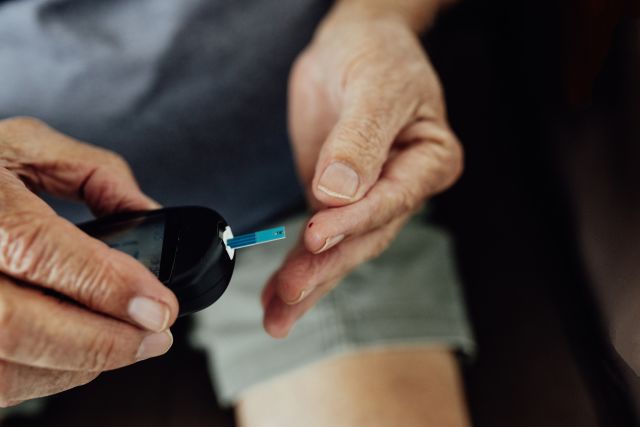Updated on March 25, 2024
How can you tell if your diabetes management plan is working to keep your blood sugar levels in your target range? An important way is to monitor your blood sugar at home.
Daily testing with a glucose meter tells you whether lifestyle changes like diet, regular physical activity, and medication are working or if they need adjustment. At-home blood glucose tests can also alert you to dangerous increases or decreases in your blood sugar level.
When to test your blood sugar
Your testing frequency depends on the type of diabetes you have (whether type 1 or type 2), how long you’ve had it, how well it’s controlled, and whether you take insulin. Your healthcare provider (HCP) will advise on how often you need to test and will help you set up a personalized schedule. That program might entail:
- Testing before or after meals
- Testing before or after exercise
- Testing before bedtime or upon waking up
- Additional testing on days when you’re ill or highly stressed
There are certain times when testing might need to be more frequent, such as during pregnancy, while quitting smoking and using other nicotine-containing products, or when you start taking new medications. You’ll also likely need to test more often when there’s a change in your diabetes treatment program.
How to test your blood sugar
Keep a daily log of your readings, follow the instructions in your glucose meter’s manual, and use these guidelines to ensure accurate readings:
- Wash your hands with soap and warm water before testing.
- Make sure the glucose meter and test strip are at room temperature.
- Make sure the test strip hasn't expired.
- If necessary, calibrate your meter for the current box of test strips.
- Insert your test strip into the meter before you obtain your blood sample.
- To obtain your blood sample, hold your hand with fingers pointing down for 30 seconds and use the side of your fingertip.
- Apply light to medium pressure with the lancet pen (also called finger-stick blood sampler, a device the size of a pen that has a sharp point for sampling a small amount of blood). Then press the button to release the lancet.
- Make sure the drop of blood you draw is large enough (although most modern meters require only a small drop).
- Throw away the lancet in a sharps container.
Types of blood glucose meters
You can choose from a variety of glucose meters. They’re all comparable in accuracy, but vary in cost, ease of use, and features. You need to maintain a log or record of your blood glucose measures and some meters have memory to store your results. Others require fewer steps to get a reading.
Some meters provide an automated log for insulin doses and blood sugar level readings, along with software or apps that track your progress and transmit your readings to your HCP. These features can save you the effort of recording your results yourself. Ask your HCP for a recommendation and check with your insurance company to make sure the meter you buy is covered under your plan.
Another alternative is a continuous glucose monitor (CGM). These devices provide 24-hour monitoring through a small sensor inserted under the skin. If blood sugar falls out of your target range, an alarm goes off or an associated app gives you an alert. CGMs may be particularly helpful for people who do not respond to common diabetes medications.
Although continuous monitoring can offer better diabetes control with reduced risk for low blood sugar, there are some caveats to consider. Depending on the model, the needle sensor may need to be replaced every 6 to 14 days. Though many devices are covered by health insurance, you’ll still need to check with your provider to determine if yours is covered. And bear in mind that you may still have to perform finger sticks to accurately track your blood sugar levels.






